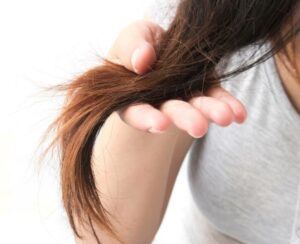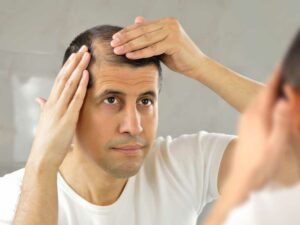Hairs are a blessing, isn’t it?
The dead cells of keratin which are almost on every part of your body are known as hairs. Hair follicle keeps every hair into the skin. As follicle produce new hair cells, old cells are pushed out from the skin.
Hair grows almost 15 centimeters every year. Average human head contains almost 100,000 hair follicle and each follicle can have 20 individual partners in a human’s lifetime. So we have average 100,000 to 150,000 hairs on our head and we lose up to 100 hairs a day.
This hair producing process gets affected by age, diseases, thyroid disease, and other various factors. There are many types of hair loss some of them are as follow:
Androgenetic Alopecia:
Androgenetic Alopecia is also known as hereditary hair loss, this is the most common form of hair loss in both, men and women.
Hairs are lost in a well-defined pattern, beginning from the upper side of the forehead and after some time hairline turns into “M” shape. Many men with this specific disease eventually become bald.
On the other side, women don’t have the same pattern of losing hair as men have. Women don’t feel any difference in their hairline but their hair became thinner all over the head. Androgenetic Alopecia rarely leads women to complete hair loss.
You are not alone, more than 50 million men and 30 million women are affected by this disease. It can start as early as a person’s teenage and risk continuously increase as age moves on.
Researchers are still trying to find factors which contribute to this type of hair loss, whoever they believe a variety of environmental and genetic factors likely play a role in causing androgenetic alopecia.
So, as far as now there are only two treatments which are approved by the Food and drug authority of USA. Those treatments such as Topical minoxidil and oral finasteride only help you to avoid further male pattern baldness but only able to reverse it temporarily. Both require regular use to keep up the impact.
Telogen Effluvium
This form of hair fall occurs when hair follicles take an undeclared break from the hair production and the next growth phase doesn’t begin. This cause hair to fall out without any backup.
Telogen Effluvium very rarely leads towards complete baldness but it may cause you to lose 500 hairs per day instead of 100. Hair might get thin, especially at crown and boundary of the hairline.
This type of hair loss is caused after several medical conditions such as
- Fever
- Surgery
- Vitamin deficiency
- Childbirth
- By taking birth control pills
- Blood thinner
It all can cause hair loss.
Fear not. Telogen effluvium is a temporary hair loss disease. It starts after three months of a medical disorder. When a patient recovers from the illness, hairs grow back with six months.
Anagen Effluvium
In this case, hairs are lost at a rapid pace as a result of medical treatment. For example cancer treatment, fast-acting medication kills cancer cells but they also stop the hair follicle production in a different part of the body.
Don’t take it seriously, the moment when the patient is recovered hair follicle starts producing hair again. It takes generally 1-3 months but dermatologists can offer medication to grow hair more quickly.
Alopecia Areata
It is an autoimmune condition where the immune system unintentionally raids on healthy hair tissues. This cause hair to fall out on the scalp and elsewhere on the body in round patches.
This condition can affect adults and children of both genders, and it all begins suddenly without any warning.
Alopecia areata can cause a different type of hair loss, such as
- Alopecia Totalis: This is a type where patient losses complete scalp hairs.
- Alopecia Universalis: In this condition, person losses complete hair on the scalp and body. It is an advanced form of alopecia areata.
- Ophiasis: it is characterized by the loss of hair in the pattern of the wave all around the head, generally at the back side.
In some cases, hairs might disappear for many years. Don’t worry- this happens to about 4.99 percent, not everyone loses all of their hair.
Tinea Capitis
This disease is also called as scalp ringworm. The scalp is affected by the infection, which causes hair loss in children. This disease is considered to be a form of superficial mycosis or dermatophytosis. It causes hair to fall in patches, leads to getting bigger over time.
Tinea capitis makes skin red or scaly, and head skin may be itchy.
The patient might get a fever or may have swollen gland as a result of local police (immune system) fighting the infection.
Dermatologists believe that children can have regular hair regrowth if tinea capitis is treated early in time.
Cicatricial Alopecia
Cicatricial alopecia is a rare disorder in which inflammation destroys hair follicles and they are replaced with scar tissue. As scar tissues grow, hair reproduction stops.
In this disease hair, fall may begin slowly, gradually without any symptoms. In some case, it might get the patient a rash, itching, and swelling on the scalp.
People of all ages, including both genders, can get affected by cicatricial alopecia. Many women from Africa suffer from this condition and is seen worldwide.
Although this disorder affected a small amount of population, it can result in permanent hair loss.
Lichen Planopilaris
Lichen planopillaris occurs when a lichen affects the scalp. It causes, flaky rash, intense red and white itching, it may be followed by burning. It is a part of cicatricial alopecia family.
It is very common and affects more on women as compared to men.
There are some treatments in the market right now which can help to stop lichen planopilaris, such as Antihistamines, Phototherapy with ultraviolet, and Steroid Creams.
Hypotrichosis
In this type of hair fall, hair didn’t ever grow in the first place from the time of birth. This happens during fetal development by a genetic deviation.
Usually, babies are born with this condition. If they have hair growth at first, they might lose them after a few months. Many hypotrichosis victims are bald by the age of 25.
Accusingly, there is not any proper treatment for this type of hair disease. It is very hard, almost impossible to treat genetic issues.





